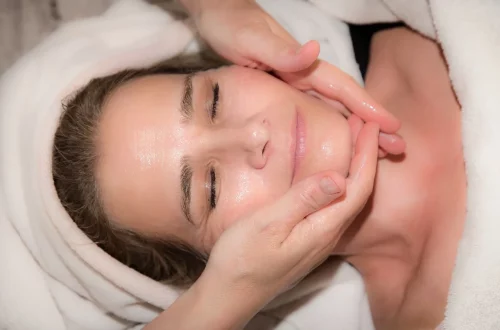
The Ultimate Guide to Choosing the Best On Foot Shoes for Comfort
Choosing the right footwear is crucial for anyone who spends significant time on their feet. Whether for work, leisure, or exercise, the comfort and support that shoes provide can dramatically impact your overall well-being. Poorly fitted shoes can lead to a myriad of problems, including foot pain, blisters, and long-term musculoskeletal issues. In our fast-paced world, where many people are constantly on the go, understanding the essential features of comfortable shoes becomes increasingly vital.
The importance of selecting the right shoes goes beyond mere aesthetics; it involves considering various factors that affect foot health and comfort. The right pair can enhance your posture, reduce fatigue, and even improve your performance in physical activities. With countless options available in the market, from athletic sneakers to casual loafers, the task of finding the perfect footwear may seem daunting. However, by focusing on key aspects such as fit, material, and design, you can make an informed decision that prioritizes comfort without sacrificing style.
In this guide, we will explore the critical components that contribute to the best footwear choices for comfort, helping you navigate the complex landscape of shoe shopping effectively.
Understanding Foot Anatomy and Its Importance
To choose the best shoes for comfort, it’s essential to understand the anatomy of your feet. The human foot comprises 26 bones, 33 joints, and over 100 muscles, tendons, and ligaments. This intricate structure enables a wide range of motion and supports our body weight while providing balance. Each person’s foot is unique, with variations in arch height, width, and overall shape.
One critical aspect to consider when selecting footwear is the arch type. There are three primary arch types: high, medium, and low (flat). Shoes designed for high arches typically offer more cushioning and support, while those for low arches often provide stability and motion control. Understanding your arch type can help you choose shoes that better align with your foot’s natural mechanics.
Moreover, the width of your foot plays a significant role in comfort. Shoes that are too narrow can cause pinching and discomfort, while those that are too wide may lead to instability. Therefore, it’s advisable to measure your feet regularly, as size can change over time due to various factors like weight fluctuations or aging.
Another critical consideration is the toe box – the front part of the shoe that houses the toes. A spacious toe box allows your toes to move freely, which is vital for preventing blisters and other foot issues. When trying on shoes, make sure there’s enough room for your toes to wiggle, and consider the shoe’s flexibility, as overly stiff shoes can contribute to discomfort.
In summary, understanding your foot anatomy is a foundational step in selecting comfortable footwear. By knowing your arch type, foot width, and the importance of a roomy toe box, you are better equipped to find shoes that provide the necessary support and comfort for your unique foot structure.
Essential Features to Look for in Comfortable Shoes
When searching for the best on-foot shoes, several key features can significantly enhance comfort. One of the most crucial elements is cushioning. Proper cushioning absorbs shock and reduces the impact on your feet and joints, especially during prolonged periods of standing or walking. Look for shoes that incorporate advanced cushioning technology, such as memory foam or gel inserts, which can provide additional comfort.
Another important feature is arch support. Shoes with adequate arch support help distribute weight evenly across the foot and reduce strain on the arches. This is particularly beneficial for individuals with flat feet or high arches, as it can alleviate discomfort and prevent injuries. Consider shoes with removable insoles, allowing you to replace them with custom orthotics if needed.
The shoe’s construction material also plays a significant role in comfort. Breathable materials such as mesh and lightweight synthetics can help regulate temperature and moisture, preventing overheating and maintaining a comfortable environment for your feet. Additionally, shoes made with flexible materials tend to allow for a more natural range of motion, which is vital for those who are active.
Another factor to consider is the shoe’s weight. Heavier shoes can lead to fatigue, especially if worn for extended periods. Look for lightweight options that still provide the necessary support and durability. Lastly, consider the sole of the shoe. A well-designed outsole with good traction can prevent slips and falls, ensuring that you remain stable and comfortable throughout your day.
In conclusion, when selecting comfortable shoes, prioritize features such as cushioning, arch support, breathable materials, weight, and sole design. These elements collectively contribute to a better fit and enhanced comfort, allowing you to enjoy your activities without discomfort or pain.
Finding the Right Fit: Tips for Shoe Shopping
Finding the right fit is perhaps the most critical aspect of shoe shopping. A well-fitting shoe is essential for comfort and overall foot health. To ensure you select the right size, it’s advisable to measure your feet at the end of the day when they are most swollen. This will provide a more accurate representation of your size.
When trying on shoes, always wear the type of socks you plan to use with them. This simple practice can significantly impact the fit. As a general rule, there should be about a thumb’s width of space between your longest toe and the end of the shoe. Additionally, make sure the shoe does not pinch your sides or heel, as this can lead to blisters and discomfort during wear.
It’s also important to walk around in the shoes for a few minutes to test their comfort level. Pay attention to how they feel on your feet, and don’t hesitate to try different sizes or styles. Each brand may have slight variations in sizing, so it’s essential to find the one that fits your foot shape best.
If you have specific foot conditions, such as bunions or plantar fasciitis, consider looking for shoes designed to accommodate these issues. Many brands now offer specialized footwear that provides additional room or support where it’s needed most.
Lastly, don’t forget about the return policy when purchasing shoes. This is particularly important if you’re buying online, as it allows you to try the shoes at home and return them if they don’t fit as expected.
In summary, finding the right fit involves measuring your feet accurately, trying on shoes with the appropriate socks, walking around to test comfort, considering specific foot conditions, and being mindful of return policies. With these tips, you can ensure a more satisfying shoe shopping experience.
Maintenance Tips for Long-lasting Comfort
Once you’ve selected the perfect pair of comfortable shoes, it’s essential to maintain them properly to ensure they remain in good condition and continue to provide the support you need. Regular maintenance can prolong the life of your footwear and help prevent the development of odors and other issues.
One of the simplest ways to care for your shoes is to clean them regularly. Depending on the material, you may use a damp cloth or a specialized cleaner. For leather shoes, consider applying a leather conditioner to keep the material supple and prevent cracking. For canvas or mesh shoes, a gentle scrub with warm water and soap can help remove dirt and stains.
Additionally, it’s wise to alternate between multiple pairs of shoes. Wearing the same pair every day can cause them to wear out more quickly and may not allow them to dry out properly between uses. Rotating your footwear gives each pair a chance to air out and recover, contributing to their longevity.
Another important maintenance tip is to replace insoles or footbeds as needed. Over time, these components can lose their cushioning and support. If you notice discomfort when wearing your shoes, it may be time to invest in new insoles to restore comfort.
Finally, store your shoes in a cool, dry place away from direct sunlight to prevent material degradation. If you’re not wearing your shoes for an extended period, consider using shoe trees to help them maintain their shape.
In conclusion, maintaining your shoes through regular cleaning, alternating footwear, replacing insoles, and proper storage can significantly enhance their lifespan and comfort. By taking these simple steps, you can ensure that your favorite shoes continue to provide the support and comfort you rely on.
—
**Disclaimer:** This article is for informational purposes only and does not constitute medical advice. For any health concerns related to your feet or footwear, please consult a healthcare professional.




